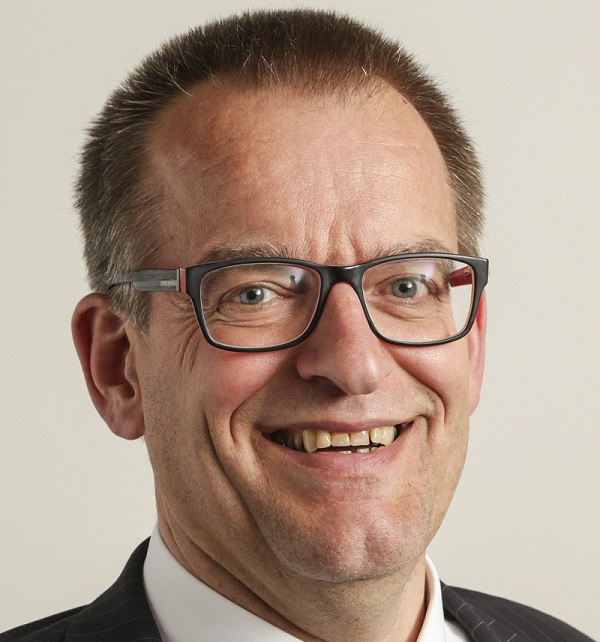Eelko Huizingh: What kind of healthcare do we want?

With unchanged policy, healthcare will inevitably get stuck. The Dutch population is ageing and healthcare is becoming unaffordable. Steady as we go is not an option, we need to switch gears. Healthcare needs to innovate. But innovating can be done in many different ways, the question is which direction we want go as a society.
That healthcare is under pressure is obvious. Sharply increasing demand leads to waiting lists and rising costs, reinforced by the backlogs caused by the COVID-19 pandemic. Health workers get overexploited, due to a combination of high workload, high rates of sick leave, staff shortage and ageing of healthcare workers. At the same time, the objective of the new Dutch Integral Care Agreement (IZA) is that the percentage of the workforce employed in healthcare must not rise further. The aim is that no more than one sixth of the workforce works in healthcare. Thus, the healthcare sector must innovate. But what is 'good' innovation?

Creating added value
Innovation is the creation of added value. A necessary condition for innovation is therefore that it is known which value is being pursued. Determining this is often surprisingly difficult. For a company it seems simple: the desired value is profit. But a lot entrepreneurs also want their business to be a pleasant place to work for employees and consider sustainability important. In healthcare, the opinions on which value to create differ even more. Traditionally, the goal is healing the sick. Helping someone with a broken leg walk again. Healthcare then focuses on our physical and mental health.
But thinking has shifted, as the prominent role of prevention in contemporary health care discussions shows. The Netherlands already has a National Prevention Agreement aimed at reducing smoking, obesity and excessive alcohol consumption. If we prevent people from getting sick, then we do not need to patch them up either. Avoiding sickness is preferable, both for the people involved and for healthcare costs. Innovations must thus increase the number of years that a person lives in good health.
But the perceptions of good health have also shifted. Positive health focuses on leading a meaningful life and resilience. Apart from physical and mental health, positive health also focuses on having a sense of purpose, experiencing quality of life, social bonding and daily functioning. It recognizes that in addition to a virus, loneliness also makes people sick, for example.
Our collective vision on healthcare determines which innovations need to be developed. Even when focusing on the recovery of sick persons. The hospital Gelderse Vallei in Ede for example introduced a meal service. During the day, patients can order meals, drinks or snacks whenever they want, which are delivered within 45 minutes. The result? Patients recover faster because they have healthier and better diets, and are more satisfied.
Diverse group of stakeholders
As a society, we need to answer the question which value healthcare must provide. This is even more complex due to the many stakeholders in healthcare. Think of policy makers, managers, insurers, pharmaceutical companies, healthcare providers and patients. And each of these groups is also diverse. For example, care providers include general practitioners, homecare workers, nurses and medical specialists. Many of them are salaried workers, others are self-employed. All these groups pursue different values, due to their different roles and different interests.
For managers and insurers, costs are important. How many minutes does it take to help someone put on compression stockings and is it possible to do it faster? A lonely elderly person maybe appreciates the conversation while putting on the stockings even more than the actual care provided. Also, think of the efficient use of flexible homecare workers versus the preference of the elderly for familiar faces.
Making choices
Hence the need to make choices about which healthcare values to pursue. What form(s) of care do we want as a society? What kind of quality and accessibility do we aim for and which costs are we willing to accept? What room do we leave for customization? Technological innovations run the risk of failing when we ignore such choices. A device for putting on compression stockings will likely not be viewed as progress by the elderly if it’s use implies losing the daily conversation with a homecare worker. Therefore, in order to be able to innovate, it is necessary to first know which direction we want to take.
These are fundamental choices that may hurt. But not choosing is worse. Then it is just like in that scene in Alice in Wonderland. Alice approaches a fork, sees a cat and asks which way to go. The cat asks her where she wants to get to and when Alice indicates she has no idea, the cat replies that then it does not matter which path she would take. Let us avoid investing in healthcare innovation this way.
Eelko Huizingh is Associate Professor Innovation Management at the Faculty of Economics and Business of the University of Groningen.
This article was originally published in Dutch in Dagblad van het Noorden, Fall 2022.
Questions? Please contact Eelko Huizingh.


